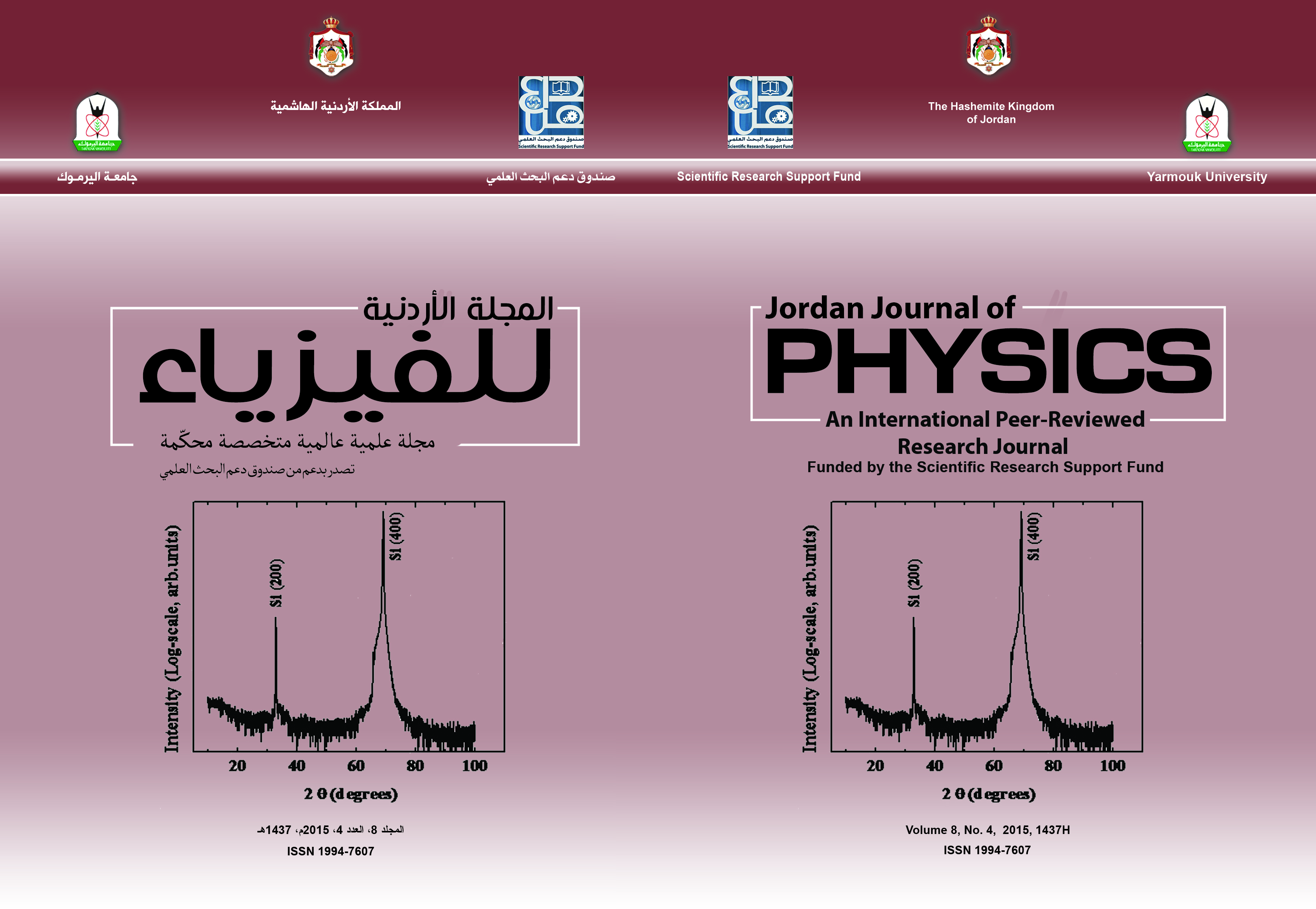Growth and Optical Characteristics of Jordanian Silica Sand Thin Films
Abstract
High-purity Jordanian silica sand (J-SiO2) thin films have been grown by RF-reactive magnetron sputtering on crystalline Si (100) and quartz substrates at temperature T < 52o C. From the X-ray diffraction observations, it was found that all films have an amorphous nature. The chemical states of oxygen and silicon in the SiO2 thin films were also investigated by energy-dispersive X-ray (EDX) spectroscopy. The EDX analysis revealed that the films have a nearly stoichiometric composition (Si/O, 73.42%/25.83%). The surface morphology of the as-deposited films was studied using field emission scanning electron microscopy. The films are observed to be dense in nature and uniformly distributed over the surface. Using the Bruggeman effective medium theory, the surface roughness layers were found to be 0.0 – 9.74 nm. By modeling the measured ellipsometric spectra with the Cauchy-Urbach dispersion model, the thicknesses and optical constants of the films were obtained in the ultra violet – infrared range. Refractive indices of the films were determined to be in the range 1.46 – 1.59, while the extinction coefficients were found to be in the range 9.6 × 10-6 – 0.076. Also, the films reveal a high transmittance (90%) and very low reflectance (< 7%) at normal incidence. Hence, the obtained accuracy of the optical constants with the transmittance and reflectance values of the J-SiO2 films for the spectral range 200 - 2200 nm is of great significance for the design of antireflection optical coatings and silicon-based electronic devices.
Keywords: Silica sand; Sputtering; Ellipsometery; Optical constants; Cauchy-Urbach.
PACS: 78.20.-e, 78.66.Jg.


